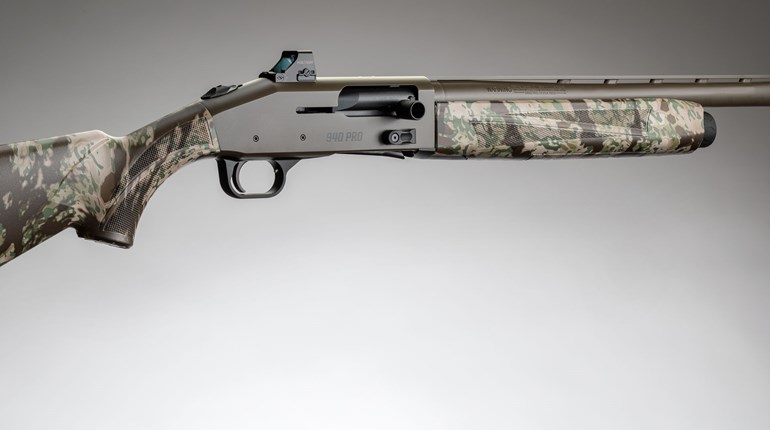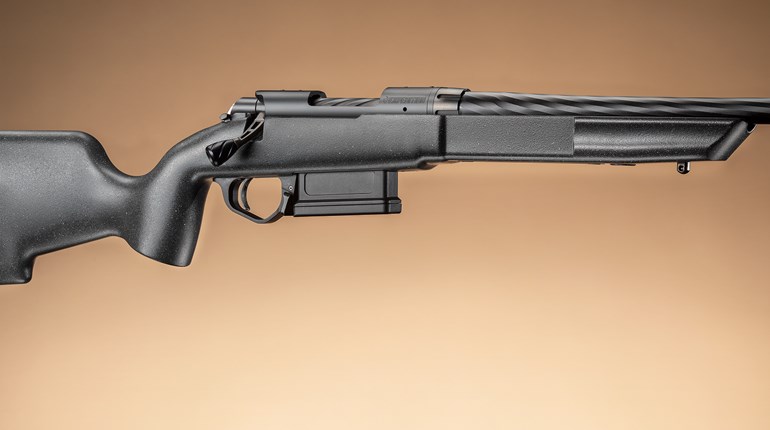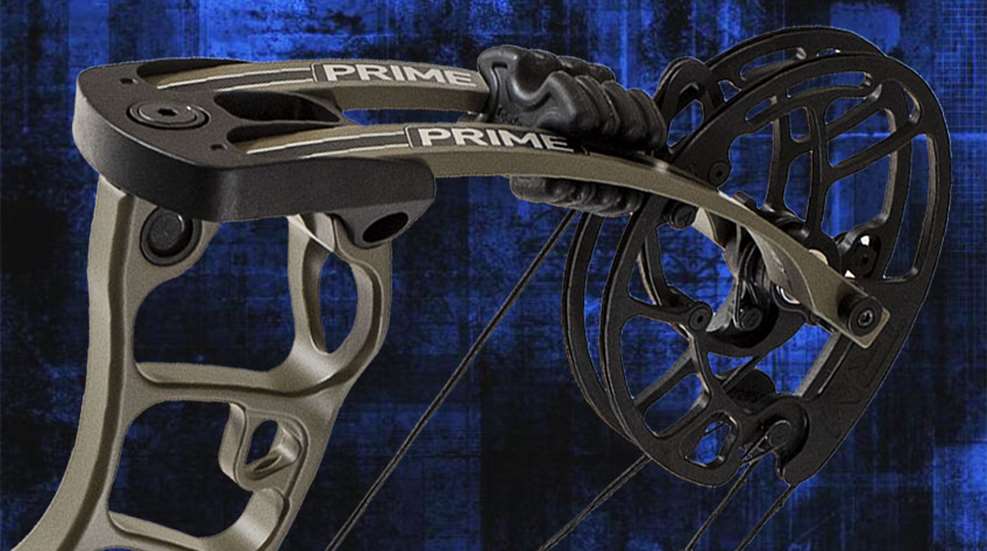
Compound bows these days are so good—and so similar in performance—that choosing one really comes down to personal preference based on feel. If you like a minimalist grip and a rock-hard back wall, for example, one bow might stand out over the others; or if you like that smooth-and-top-heavy Mathews feel, well then you know the company’s new model is its best one yet. Want to try a carbon-fiber model now that the technology is proven? There are two great ones below. Or perhaps you just want a great all-around hunting bow, even if it’s not the best in any one trait. What follows is one man’s opinion of the half-dozen hottest bows for 2019. But before buying one, for Fred Bear’s sake, go shoot them first at your local dealer, as only you can know what feels best ... for you.
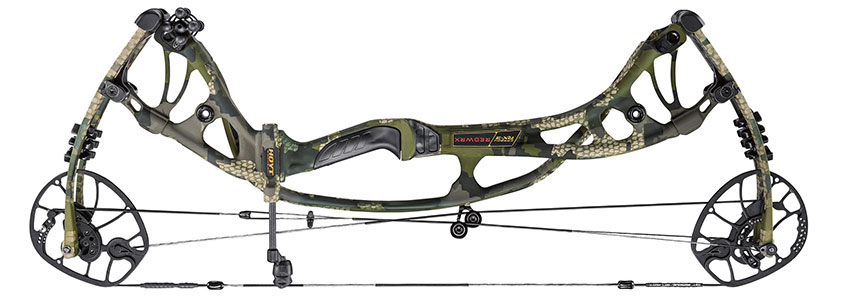
Hoyt REDWRX Carbon RX-3
Hoyt has made a name for not being the fastest or the lightest, but in terms of sheer hunting bows—meaning solid, quiet and easy to shoot well—I think Hoyt is top-notch, perhaps only rivaled by Mathews. Predictably, the company is building off the smashing success of its carbon-fiber-riser REDWRX Carbon RX-1—which proved to be my favorite bow of 2018—with the more compact REDWRX Carbon RX-3. While plenty of archers like longer bows for their stability, I prefer shorter bows that are easier to carry in the elk woods and shoot out of treestands at whitetails. So the 30.5-inch axle-to-axle RX-3 is right up my alley. It’s also available in a 34-inch version and a 31-inch Turbo model.
In making the RX-3, Hoyt remedied the only two complaints anyone could possibly have from last year’s RX-1 in that it was a whole 3 ounces heavier than some of its competitors and a few fps slower. The RX-3, however, weighs just 3.9 pounds and is touted at 342 fps—numbers that place it right up there with the best.
What I like about this carbon-fiber bow is its inherent quietness both while shooting and while moving through the woods. It doesn’t vibrate like a metal tuning fork, it’s warm to the touch and it doesn’t clank so badly in the woods. Finally, there is something about Hoyt’s cams and eccentrics that make its bows forgiving, meaning they’re easy to shoot well. The RX-3’s ZT Pro Cam is one of the company’s fastest, but it still maintains the smooth hunting bow feel. The only downside? You pay for all this Star Wars technology—the RX-3 is the most expensive bow on this list. MSRP: $1,699; hoyt.com.
Technical Specifications
• ATA Speed Rating: 342 fps
• Dimensions: axle-to-axle length 30.5″; weight 3.9 lbs.
• Brace Height: 6″
• Draw Lengths: 25-28″, 27-30″
• Draw Weights: 30-40 lbs., 40-50 lbs., 50-60 lbs., 55-65 lbs., 60-70 lbs., 70-80 lbs.
Comments: Wonderful all-around hunting bow, most expensive on this list.
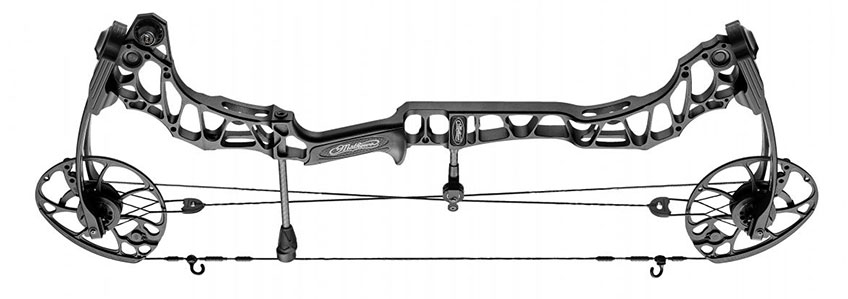
Mathews Vertix
There’s a reason Mathews perennially sits atop the best-selling hunting bow market, and its’s not because it makes inferior products. To the contrary, I’ve never known someone to spend $1,000 and not be happy with their new Mathews. Its bows do, however, have a distinct feel and if you love them, you love them. My biggest beef with the company in general has been the overall large size of its bows in the last 10 years since it’s gone to dual cams—not so much in axle-to-axle length, but the bows’ total footprint—and the lack of grip options. A couple years ago it remedied the grip issue with multiple options, and last years’ bow, the Triax, and this years’ new Vertix address the size issue.
Indeed, the Vertix is solidly in the compact class with its 30-inch axle-to-axle, 6-inch brace height and stubby split limbs. It weighs 4.67 pounds—which is actually very heavy for top-end of top-end bows these days—but that extra weight helps stifle noise, hand shock and vibration. In fact, from my test unit and the howls of nearly every bowhunter who has shot this bow, it’s likely one of the quietest bows ever built. And holy moly is it silky!
The real story here, however, is the Vertix’s innovative Switchweight modular cam system that lets the shooter adjust the bow in 5 pound weight increments while keeping the bow at peak efficiency. In my case, for example, I shoot a 60-pound bow for deer hunting because it’s plenty for whitetails and it’s easy to draw. However, if I wanted a little more power for elk hunting, the best I could do previously was to buy another bow—and that’s not going to happen for a one-week hunt. But with the Vertix, I can simply change a module and crank it up to 65. Modules are available in 65, 70 and 75 pounds. Finally, I love its new “Engage” grip, a balance between a minimal target grip and a rubber hunting grip. Plus, I can customize the bow, limbs and strings in any color I want. When you’re paying this much for a new bow, it’s kind of cool. Oh yeah, the thing shoots lights out. MSRP: $1,099; mathewsinc.com.
Technical Specifications
• ATA Speed Rating: 343 fps
• Dimensions: axle-to-axle length 30″; weight 4.67 lbs.
• Brace Height: 6″
• Draw Lengths: 26-30.5″
• Draw Weights: 60, 65, 70, 75 lbs.
Comments: Quiet, compact, heavy, great hunting bow, great comparative value.

PSE Carbon Air Stealth EC
I’ll admit that I’m biased to Precision Shooting Equipment (PSE) because I began shooting them at a young age, I love the way they feel, and I still think they’re underrated in terms of innovation, quality and performance. PSE bows have the most “no-nonsense” grips in the business, which puts the hand in direct contact with the riser. They have also historically been some of the fastest bows, but where they don’t get the credit they deserve is in their quietness and shootability, even with that speed. Regardless, in the last couple years, PSE has tried to create the ultimate hunting bow with its Carbon Air series. Its latest is the Carbon Air Stealth EC, and at 3.3 lbs. you can barely tell it's in your hand.
PSE contracted a cutting-edge Italian company to make a true hand-laid carbon-fiber riser to which it attached its incredible Evolve cam system. The Evolve is adjustable up to 90 percent let-off and let me tell you, the first time you try it, it’s freaky. It almost seems like the bow won’t go off! But once you get used to it, you can think of the release like pulling a gun’s trigger and nothing else.
The Carbon Air Stealth EC is like the Jaguar coupe of hunting bows with its clean, flowing look and few attachments. As such, it weighs a stupidly light 3.3 pounds, even with its longer-than-last year 33-inch axle-to-axle length, making all other bows seem heavy. It’s also fast at 342 fps and extremely smooth with presumably my favorite all-around cam system on the market. However, PSE was limited in the grip designs it could build with its carbon fiber design. As such, the resulting grip is a little too wide (or boxy), if I’m being picky. Also, at 3.3 pounds, my test bow did exhibit more hand shock than the heavier bows, but this is a tradeoff for being so easy to carry. Although PSE doesn’t market their bows by trademarking and hyping every little doodad they dream up, this bow is probably the most advanced on the market, but try it for yourself. MSRP: $1,499.99; pse-archery.com.
Technical Specifications
• ATA Speed Rating: 342 fps
• Dimensions: axle-to-axle length 33″; weight 3.3 lbs.
• Brace Height: 6″
• Draw Lengths: 25-30.5″
• Draw Weights: 50, 60, 65, 70 lbs.
Comments: Extremely light, crazy let-off, smooth and fast cams, notable hand shock, sleek and quiet in the woods.
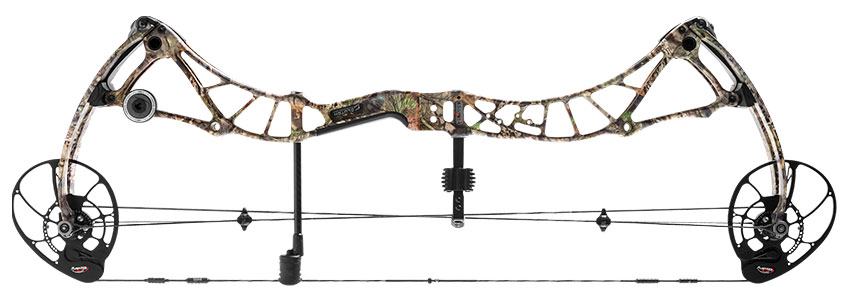
Bowtech Realm SS
Bowtech can’t be lumped into one category; over the years the company has proven that it can make speed bows, with its RPM 360 models that were about as fast as compounds get. Yet it’s also proven that it can make pure hunting bows, like its cult-followed Destroyer series several years back. Today, Bowtech has taken a different tact than other archery companies in that it’s trying to build a model for to suit everyone with its Realm series. The new Realm SS (Super Smooth) is geared more toward hunters like me who put more value in a non-herky-jerky draw cycle, a quiet shot and hunting accuracy rather than a super-fast bow like its new Realm SR6. Then there’s the longer Realm X, and the original Realm that I love for its compact size and long brace height.
In a nutshell, the difference in all of these bows is slightly different cam setups and various axle-to-axle lengths, so the bows perform slightly differently. The Realm SS, however, is intriguing for hunters because it’s about average in all categories in terms of length (32-inches axle-to-axle), speed (just under 340 fps ATA), and weight (4.3 lbs.). So it’s a great blend for hunters, but what separates it is its quietness. Bowtech kept the same hybrid-cage-style riser on the Realm, but dialed the cam back slightly by weighting its perimeter, and this naturally makes it quieter. What results is one of the quietest, smoothest, easy-to-draw-and-shoot bows ever made. I can draw it straight back without it lurching at all as the cams roll over. When a buck is at 8 yards and smells you, this is a big deal. Then when you release the string and the buck can’t hear it well enough to duck it, it’s even bigger.
I absolutely love the “Clutch” grip, which is a skeletonized, minimalist grip, but one that is backed by a thin piece of rigid plastic to provide some insulation when hunting. The Overdrive Binary Cam system is easy to adjust without a press, so it’ll fit perfectly. All told, you can’t go wrong with any Realm, but the SS is like butter. MSRP: $1,199; bowtecharchery.com.
Technical Specifications
• ATA Speed Rating: 337 fps
• Dimensions: axle-to-axle length 32″; weight 4.3 lbs.
• Brace Height: 6”
• Draw Lengths: 25-31″
• Draw Weights: 50, 60, 70 lbs.
Comments: Smooth, quiet, fast, compact even at a 32-inch axle-to-axle length, great grip, not the fastest, average weight, top-end all around hunting bow.
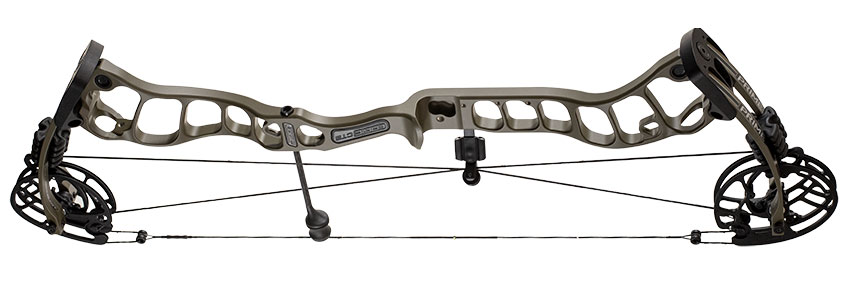
Prime Logic CT3
Prime has developed a cult following among archers in the know. Several of my hunting buddies who own pro shops say Prime, with its parallel cam technology, are the easiest bows to tune in the business. In the past, however, with their large size, target-style grip and back wall that feels like iron, they felt to me like target bows in hunting camouflage, and that’s what many pure archers want; these guys figure accuracy is the most important thing. However, Prime made a concerted effort this year to make its Logic CT3 more of a hunting bow while keeping everything that makes the bow inherently accurate. And some guys like me don’t like a back wall that’s so hard that it makes a noise and causes the bow to lurch when it bottoms out, so Prime includes cable stops that soften it. Problem solved for all.
Most notable about the CT3 series (the 5 is longer and faster and the CT9 is longer yet) is its compact width. Stubby little limbs and a brace height of 6.5 inches do it, and this is a vast departure from the box kite-size of prior models. Prime is owned by G5 Outdoors, a Michigan firm that’s been around for years as a top-quality OEM machinist. And the machining quality comes through on the Logic. Everything from design to execution of the riser and cams is perfectly made; it all fits together without a bunch of plastic or gimmicks, and I believe this shows up when shooting the Logic on the range.
Prime continues to stick by its unique parallel cam design that does away with cam lean. Most pros I’ve talked to say it’s really works as advertised, with the only downside being it adds a little weight, and that’s why the bow is one of the heavier ones here at 4.4 pounds. Overall, the Logic CT3 has a very firm and solid feel with a direct-riser target grip; it’s not the quietest here, nor the smallest or the fastest, but it may very well be the easiest to tune and the most accurate—if you’re good enough to tell it. MSRP: $999; g5prime.com.
Technical Specifications
• ATA Speed Rating: 335 fps
• Dimensions: axle-to-axle length 33″; weight 4.4 lbs.
• Brace Height: 6.5″
• Draw Lengths: 24.5- 30″
• Draw Weights: 40, 50, 60, 65, 70, 80 lbs.
Comments: Easy to tune, stiff, not the quietest or fastest, target bow-accurate, optional back wall firmness, most compact Prime, target grip, available in small sizes, least expensive on this list.
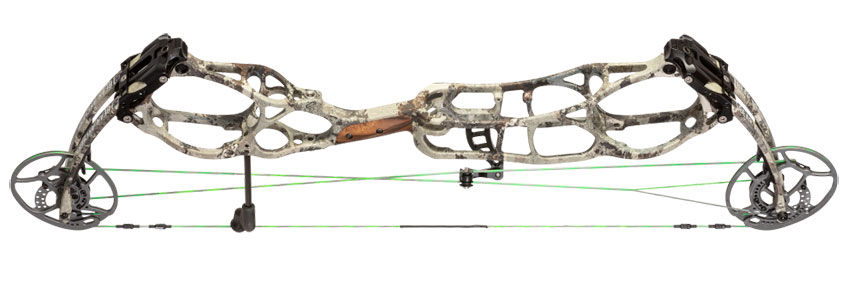
Bear Perception
No “what’s hot for 2019” archery story would be complete without tossing in an innovator. This year, the award goes to Bear Archery for its new Perception. While I haven’t shot the Perception yet and therefore can’t definitively report, initial reports are solid, and its innovation makes it worth reporting on.
Over the years, several companies have tried shoot-through riser designs because it makes a ton of sense. After all, placing the arrow on one side of the bow’s riser induces cam lean, creates torque on the cables and other accuracy-robbing issues. Bear thinks it has something with its Perception, and perhaps it has once hunters can get over its radical look. What’s most incredible is that this bow, with the wide cage riser, still only weighs 4.4 pounds. Other than the fact that the rest is located in the center of the bow and therefore the bow is fully ambidextrous, it’s just like Bear’s other top-end offerings in terms of limbs and eccentrics.
It features cams touted at 350 fps—the fastest on this list—and short split limbs that transfer energy efficiently. It’s a little longer than the other bows listed at 33 inches, but I’m in the minority for liking ultra-compact bows. Its brace height is short at 6 inches, hence the top-end speed, and it doesn’t have the most let-off either (75 percent) for the same reason. The only real downside I can find in the bow so far is its high price tag—but I guess that’s what we must pay for innovation. And if the shoot-through design proves out, you can bet we’ll see more of this style from the big boys in the industry come 2020. Until then, kudos to Bear for pushing the envelope. MSRP: $1,499; beararchery.com.
Technical Specifications
• ATA Speed Rating: 350 fps
• Dimensions: axle-to-axle length 33″; weight 4.4 lbs.
• Brace Height: 6″
• Draw Lengths: 25.5-30″
• Draw Weights: 45-60 lbs., 65-70 lbs.
Comments: Radical shoot-through riser design, blazing fast, wide and bulky looking, innovative, bow for those who strive to be different, expensive.














